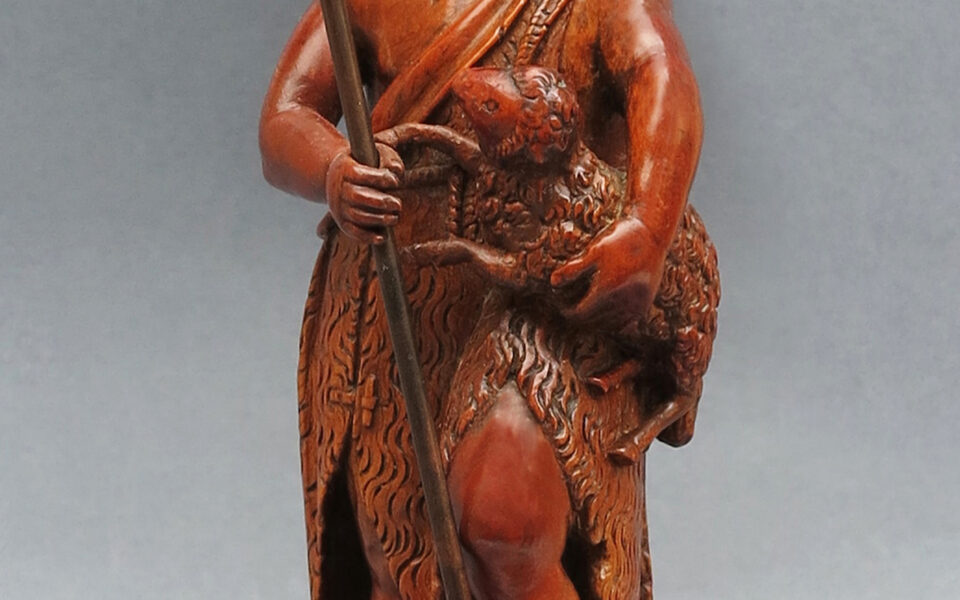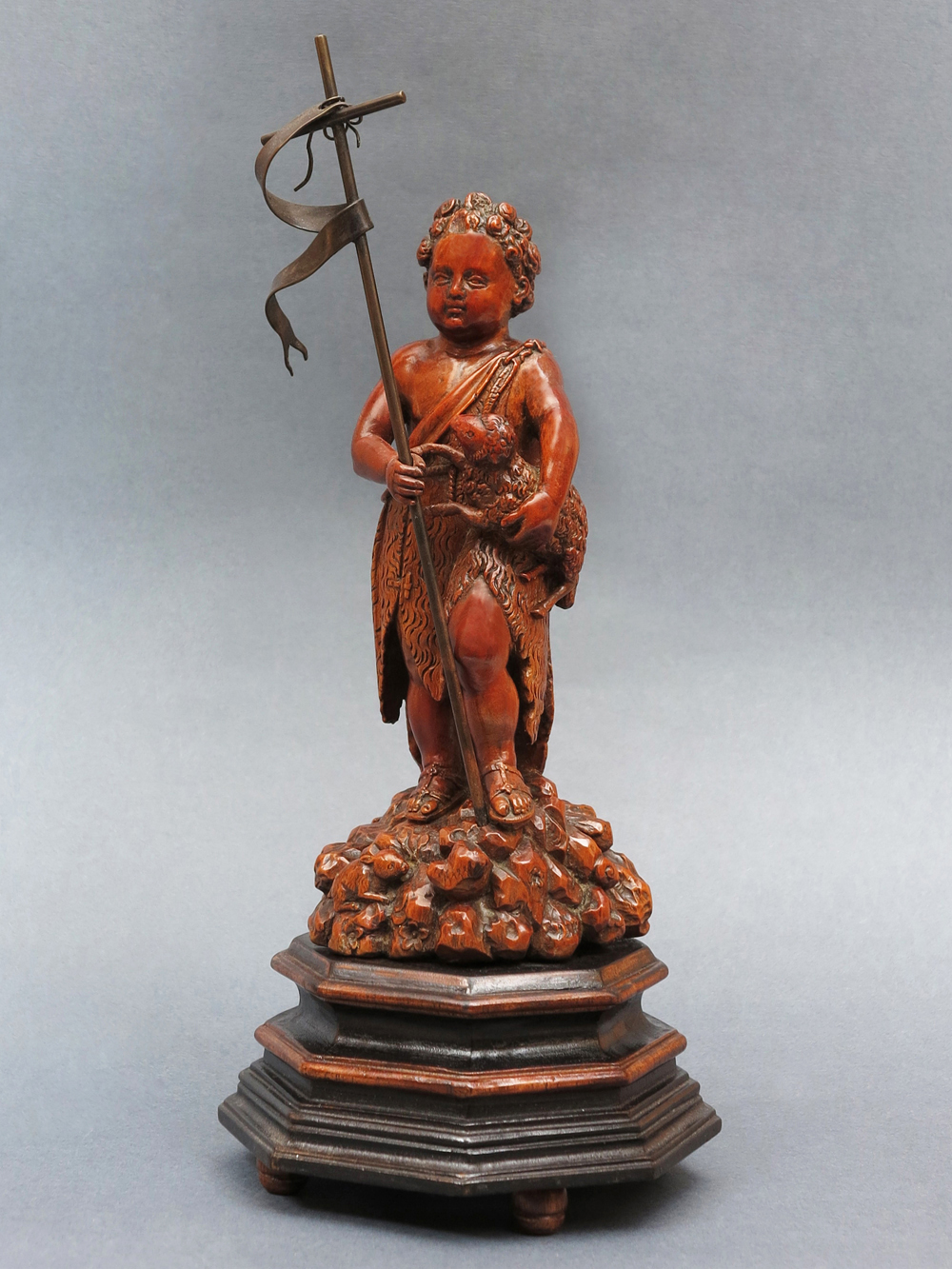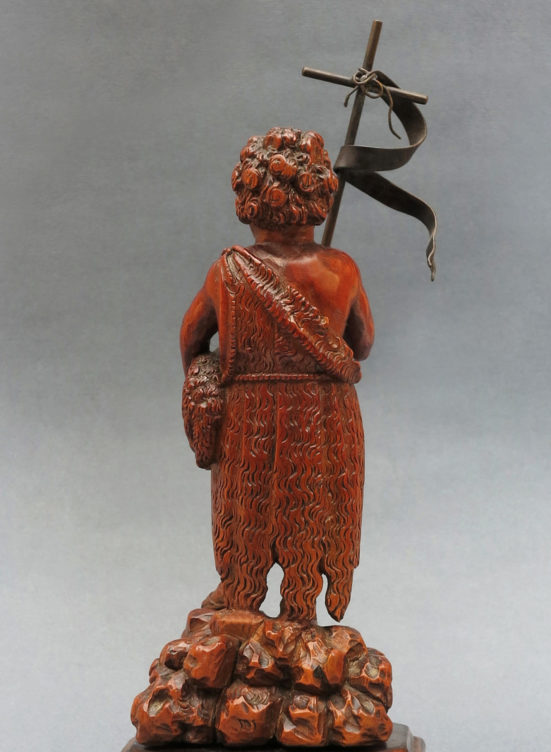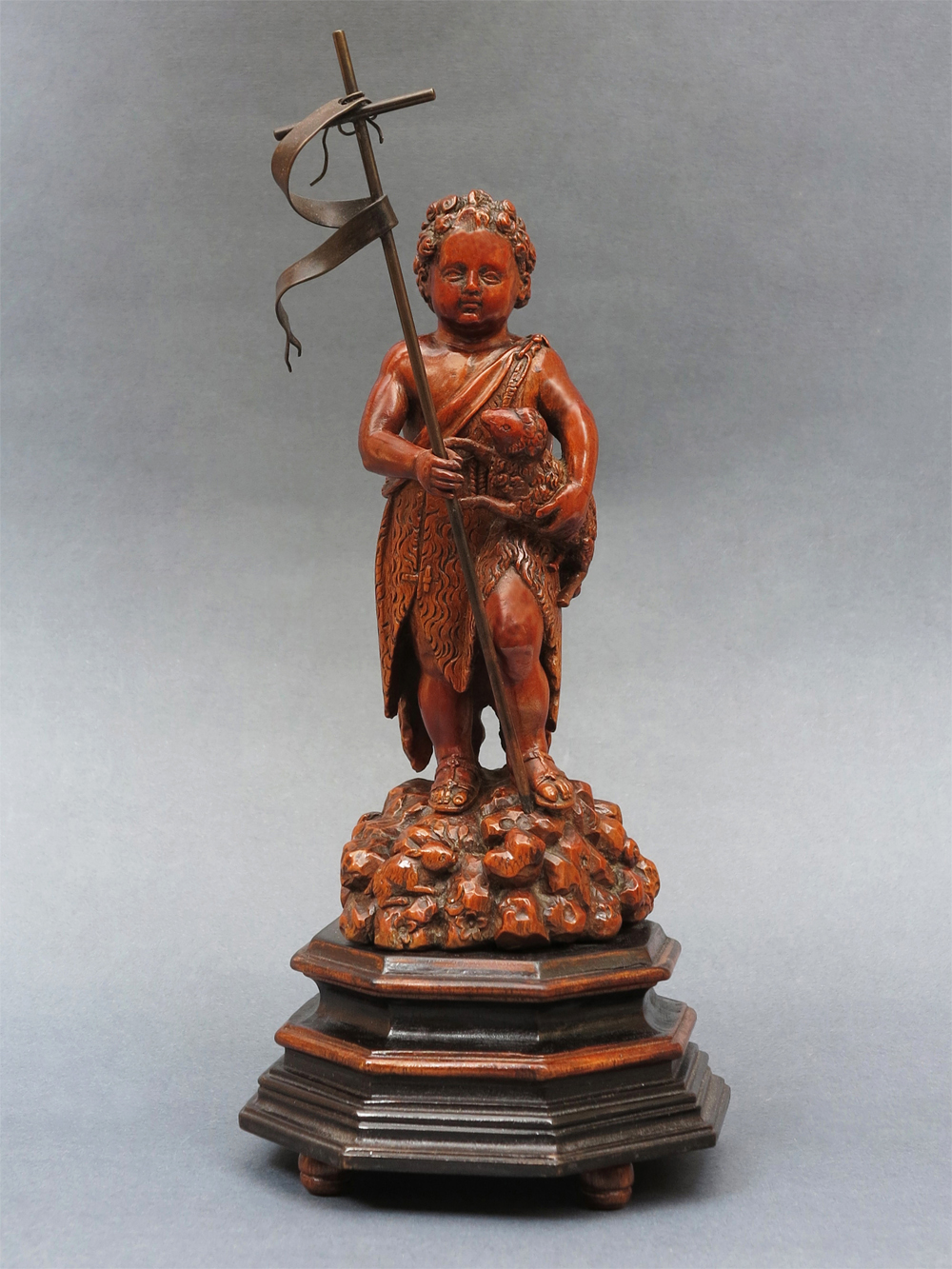
A Delicate Saint John the Baptist in Boxwood
This elegant boxwood sculpture depicts St. John the Baptist as a child, standing on a rock populated by tiny animals; he wears his typical camel’s-hair robe, tightened around the waist by a rope, with the overturned upper flap and fastened on the side by froggings. The Baptist carries a little lamb in his left arm while holding in his right one the typical rods cross with a hanging metallic banner (a later addition).

The absence of tension in the young saint’s face and its posture, with the weight on the right leg, gives the sculpture a particular intensity, underlined by the delicate and generous anatomy of the uncovered limbs. The elements identifying the character belong to the classic iconography of the Baptist since the early Renaissance; one can think of the famous Florentine representations of the early fifteenth century, or the even more famous ones by Leonardo, Michelangelo and Raphael: the cross as a symbol of his role as a forerunner, a sign of poverty and humility; the flag with the words that John pronounced when he saw Jesus (Ecce Agnus Dei); the camel skin to indicate his stay in the desert; finally the little lamb, concretely translating the words he addressed to Jesus and symbolizing at the same time the purity of the Baptist.
The detailed description of the animal’s fleece, the curls and locks of the clothing, as well as the boy’s face, his shoes and the rabbit hiding among the boulders of the base, together with the plump look of the figure, reminiscent of the antique cherubs, are evidence of the artist’s particular naturalistic and aesthetic interest, so to suggest the attribution of this sculpture to the Franco-Flemish area, around the first half of the seventeenth century.

The tradition of small boxwood sculpture has been particularly popular since the 14th century, especially in Northern Europe, from France to Flanders and Germany. Boxwood has been considered a rare and precious material since Antiquity, for its peculiar hardness and resistance; the compact structure and its particular grain allows to carve it in all directions, makes it resistant to polishing and suitable to the rendering of the most minute details. Imported in Northern Europe from the Mediterranean and Black Sea areas, boxwood initially appears light yellowish, but over time it acquires warm colors with orange and red shades, sometimes reinforced by artists with lacquers or varnishes, probably to make it chromatically similar to bronze.
Among the most important centres of boxwood sculpture between the sixteenth and seventeenth centuries we can mention Malines, Antwerp and Liège, where precious sculptures like this one, small in size and intended for private devotion, were particularly appreciated. However, there are very few known and documented artists who have worked this precious wood. Among these we can include the famous German artist Leonhard Kern and the Flemish Albert Janszoon Vinckenbrinck, Lucas Faydherbe and Maria Faydherbe, and maybe to the circle of this latter, the sculpture in question can be referred.

Maria Faydherbe (Mechelen, 1587 – after 1633), circle of
SAINT JOHN THE BAPTIST
Boxwood
1630-50
Cm 5,5 x 5,5 x 15h
References: Katlijne Van Der Stighelen, Mirjam Westen, Maaike Meijer, A chacun sa grâce: Femmes artistes en Belgique et au Pays-Bas 1500-1950, Ludion, 1999, p. 144; J. Jansen, Het geschil van Maria Faydherbe in 1632–1633 of despanning tussen Renaissanceen Barokbeeldhouwkunst te Mechelen, in “Bulletin kik/irpa” 22 (1988–1989), p. 78-103; Marjorie Trusted, Maria Faydherbe: a seventeenth-century sculptor in Mechelen, in “The Burlington Magazine”, 156 (2014), 1331, p. 104-106; H. Schmidt, Bronze, Boxwood, and Ivory in the Robert H. Smith Collection of Renaissance Sculpture, London 2015; Klara Alen, Maria Faydherbe (Mechelen, 1587 – after 1633), a woman sculptor in a man’s world, in Facts & feelings. Retracing emotions of artists, 1600 – 1800, Turnhout 2015, p. 77-99.
© 2013 – 2024 cesatiecesati.com | Please do not reproduce without our expressed written consent
Alessandro Cesati, Via San Giovanni sul Muro, 3 – 20121 Milano – P.IVA: IT06833070151